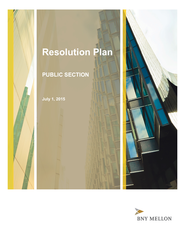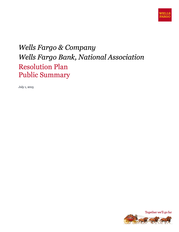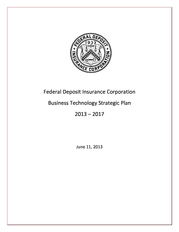Public versions of the resolution plans of Wells Fargo and Bank of New York–Mellon - January 20, 2016
FDIC
Description
on debt versus equity within the plan, should be made public, as this would enhance the market’s
role in assuring the right balance within the plans.
Conclusion
In bankruptcy, the conversion of standard debt is often part of workable reorganization strategy.
But banking authorities should be cautious before demanding increased levels of debt for
individual banking firms or encouraging an increase in the effective leverage of an industry.
It is difficult to accept that more leverage solves the destabilizing problem of leverage. If
additional debt is useful to a specific firm, the amount should be determined on a firm-by-firm
basis as part of the living will program, with the balance between debt and equity carefully
judged. During this process, banking companies would have to show that debt could be
successfully used in bankruptcy without weakening balance sheets or ultimately costing the
taxpayer money to resolve a failure.
Adding leverage to the banking system in the hope that this will prove to be stabilizing is a
gamble. There is considerable evidence that strategies that encourage increasing leverage within
the banking industry have in past crises only exacerbated losses.
The goal is resilience and, if necessary, resolution without government or taxpayer assistance. That is best achieved not by increasing leverage, but by requiring the right balance of debt and added equity for each firm and the industry as a whole. ### The views expressed are those of the author and not necessarily those of the FDIC. Thomas M. Hoenig is the Vice Chairman of the FDIC and the former President of the Federal Reserve Bank of Kansas City.
His research and other material can be found at http://www.fdic.gov/about/learn/board/hoenig/ .
The goal is resilience and, if necessary, resolution without government or taxpayer assistance. That is best achieved not by increasing leverage, but by requiring the right balance of debt and added equity for each firm and the industry as a whole. ### The views expressed are those of the author and not necessarily those of the FDIC. Thomas M. Hoenig is the Vice Chairman of the FDIC and the former President of the Federal Reserve Bank of Kansas City.
His research and other material can be found at http://www.fdic.gov/about/learn/board/hoenig/ .













